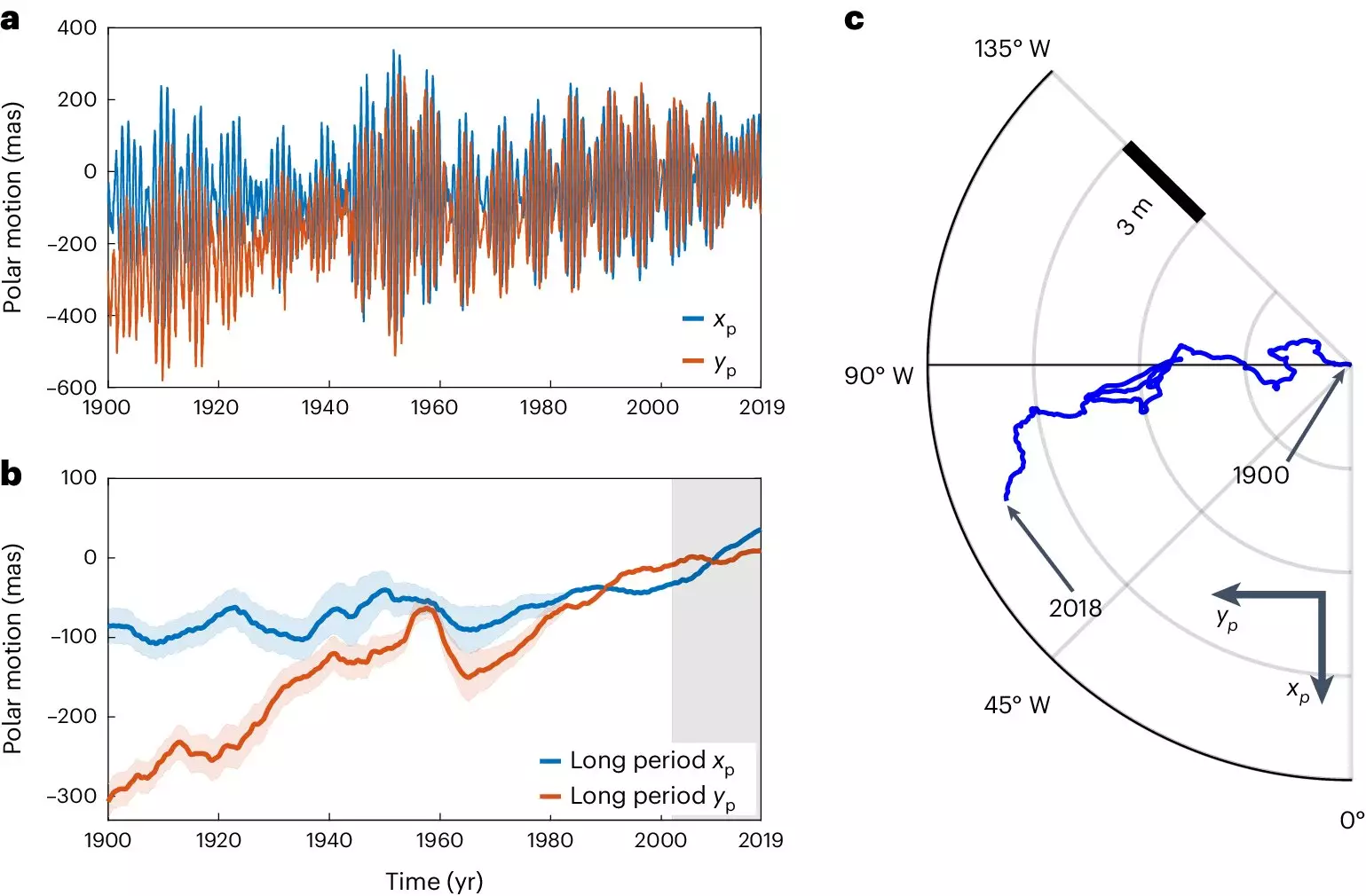

In the most comprehensive modeling to date, researchers at ETH Zurich have been able to fully explain the various causes of long-term polar motion using AI methods. This groundbreaking research sheds light on how climate change and global warming are impacting Earth’s rotational speed, which is more significant than the effect of the moon that has been influencing the length of the day for billions of years.
Climate change is leading to the melting of ice masses in Greenland and Antarctica, causing water to flow into the world’s oceans, especially towards the equatorial region. This shift in mass is affecting Earth’s rotation, similar to how a figure skater’s rotation slows down when her arms are stretched out during a pirouette. This change in rotation is governed by the law of conservation of angular momentum, resulting in longer days on Earth. The ETH researchers have published studies on how climate change influences polar motion and the length of the day, highlighting the impact of water flowing from the poles to lower latitudes in slowing down the planet’s rotation.
The research indicates that continued greenhouse gas emissions by humans and subsequent global warming will have a greater influence on Earth’s rotational speed than the moon. This underscores the significant impact that human activities have on the planet and the responsibility to address these environmental issues. As Benedikt Soja, Professor of Space Geodesy at ETH Zurich, emphasizes, “We humans have a greater impact on our planet than we realize.” This realization necessitates a deeper understanding of how our actions are affecting Earth’s fundamental processes.
In addition to changes in rotational speed, shifts in mass caused by melting ice are altering the Earth’s axis of rotation. The movement of the axis of rotation where it meets the Earth’s surface is observable and can shift several meters per hundred years. These alterations are not solely due to the melting of ice sheets but are also influenced by movements within the Earth’s mantle and heat flows in the outer core. The researchers at ETH Zurich have developed a model that explains how polar motion results from processes in the core, mantle, and climate at the surface, offering a comprehensive understanding of these complex interactions.
One key finding from the study is the interconnectedness of processes within the Earth, where changes on the surface can impact dynamics deep within the core. Climate change is not only affecting the Earth’s axis of rotation but also influencing processes in the planet’s core. The feedback mechanisms at play are altering the dynamics of the Earth’s core, highlighting the far-reaching implications of ongoing climate change. While these effects are considered minor and pose no immediate risk, they underscore the need to consider the broader impacts of environmental changes.
The researchers utilized physics-informed neural networks, a novel AI method that incorporates physics principles to develop robust algorithms for machine learning. This approach allowed them to model the various effects on Earth’s surface, mantle, and core, considering their interactions. By using these advanced algorithms, the researchers were able to track the movement of Earth’s rotational poles and validate their model with real data from astronomical observations and satellite measurements. This modeling not only provides insights into past changes but also enables forecasts for future shifts in Earth’s rotation.
The research conducted at ETH Zurich highlights the significant impact of climate change on Earth’s rotation. By understanding how shifts in mass, melting ice, and human activities are influencing the planet’s rotation, we can enhance our knowledge of these complex processes and address the environmental challenges we face. As we navigate the implications of climate change, it is essential to consider how these changes may affect Earth’s fundamental dynamics and ecosystems.
In the realm of software development, the ability to swiftly and accurately address bugs is…
The realm of quantum computing and communication is not just an abstract dream anymore; it…
In a remarkable leap for the field of material science, a collaborative research initiative has…
Throughout Earth's vast history, our planet has endured five major mass extinction events that reshaped…
Rainfall is a vital element of our planet’s hydrological cycle, yet many aspects of its…
On a night when the universe aligns, a mesmerizing phenomenon awaits: the appearance of the…
This website uses cookies.